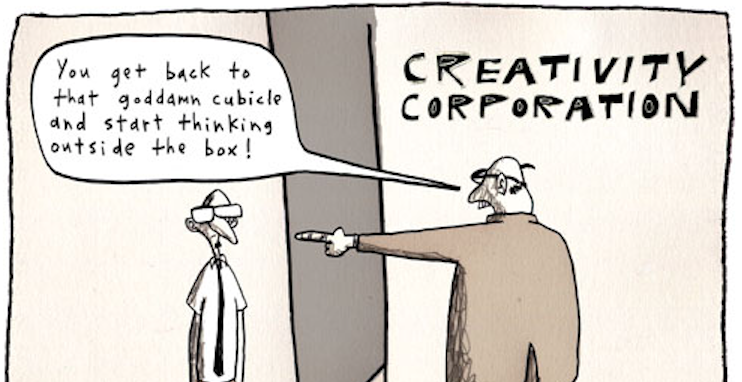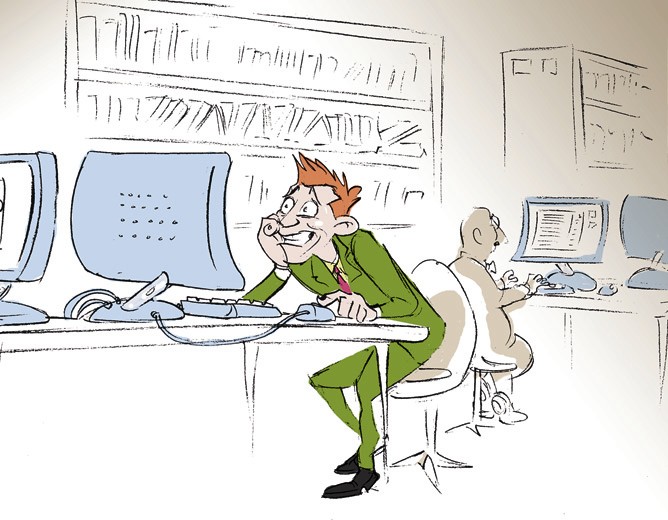The main project that participants in L21C will work on for the next three months is called “LawHacks.” It’s a group project that will culminate in a pitch, “Dragon’s Den” style, to a panel of judges. The challenge is to come up with innovative ways to provide legal services and do law better.
Here are the detailed instructions:

The Problem
The idea behind LawHacks is crowdsourcing solutions to a problem. The problem, in very simple terms, is finding better ways to be lawyers.
To elaborate:
- From a certain perspective, there is an oversupply of legal services: it’s becoming harder for some firms to compete and stay profitable, there’s softening of demand (and expectations of better deals on price, speed and efficiency) from traditional purchasers of legal services, and the job market is getting tougher.
- At the same time, there is an undersupply of legal services: there is a huge amount of need for help with legal problems that is not being met. Business clients still need legal services, but they are facing their own pressures to ensure that each dollar spent on lawyers is justified. Ordinary people generally have severely limited access to legal services, or no access at all.
So the problem is how to bridge that gap, between shrinking profitable work for lawyers and unmet demand for our skills and help.
The gap is connected to other challenges facing the profession, including: attrition of talented and highly trained people, especially women and minorities; narrowing access to the legal profession linked to the cost of legal education and a shrinking supply of articling positions; and the difficulty that some lawyers experience in achieving a satisfying and well-rounded life.
There are lots of smart, talented people who want to help solve clients’ legal problems and have the knowledge, intelligence and creativity to do it, and there lots of potential clients who need them, yet in many ways our current system for connecting one side of that equation to the other is not functioning well.
This is what is known as a “wicked problem.” It is multidimensional. It does not have a single “right” solution (although there are surely solutions that are better and more effective than others). Wicked problems are tough to solve – or even impossible to solve completely – because they involve a complex mix of contradictory and changing requirements, and a solution that deals with one dimension may reveal or create other problems.
The Proposal
Your task is to come up with a strategy, idea, tool, product or something else that helps address the problem.
Essentially, you are developing an innovative technology, in the broadest sense of the word:
Technology is the collection of techniques, methods or processes used in the production of goods or services or in the accomplishment of objectives (Wikipedia)
This does not have to mean technological solutions in the narrow sense (for example, designing an app or using modern communications technology) – but of course, you are welcome to incorporate “tech” elements like these into your project.
You choose your own direction.
Your team can choose which of the many dimensions of the problem you want to focus on.
Here are a few suggestions for directions you might want to pursue. They are suggestions only, intended to spark your imaginations, not to constrain you.
- New approaches to regulation of the profession and/or business models (see readings for October 14)
- New approaches to charging for legal services (see readings for October 21)
- Technological solutions to enhance access to justice for disadvantaged groups (see readings for October 28)
- Reformed approaches to legal education and the law school curriculum (see readings for November 11)
- A plan for improving diversity in the profession and the retention of women and minorities (see readings for November 18)
- A better way of disseminating legal information to those who need it
- A new approach to funding legal education to improve access to the profession and give graduates more freedom in their choice of career options
- A plan for getting better and more complete information about unmet needs for legal services
How you turn your idea into a proposal to present to the judges is really up to you. There are two main things to keep in mind:
- You have to explain to the judges why it matters – why is it important to do the thing that you are trying to do?
- And you have to convince the judges that it will work – is this a practicable solution that will produce useful results?
The Pitch
Teams will pitch their LawHacks to a panel of “dragons” in the last two class sessions, November 25 and December 2.
Each team has a total of 40 minutes allotted for its pitch.
The overall goal, similar to “Dragon’s Den,” is to persuade the dragons that your project is worth “investing” in. Unlike in Dragon’s Den, however, your project does not have to be a business proposal intended to generate profits (although it can be – and if it is, you should be prepared to show the dragons how it will make a profit). You should persuade the dragons that this project will give a good return on investment – whether that is measured in the traditional way (profit) or as a social investment that creates benefits for the community.
The total time consists of:
- The “elevator pitch”: 5 minutes. This is a very quick explanation of the essence of your idea.
- A more detailed presentation: 15 minutes. This is where you walk the dragons through the specifics of your proposal. Think of it as something like a TED talk.
- Interview with the dragons: 20 minutes. The dragons will question you about how your proposal will work, what problems there might be and how you plan to address them.
How you set up your presentation and what tools you use is completely up to you. You can use live talk by the whole group or any number of members of the group; Powerpoint; Keynote; Prezi; video; a web site; a demo of any prototype you have created; or any combination of these or anything else.
- You need to have a realistic plan for putting your idea into operation; just a vague idea is not going to cut it with the dragons.
- You should gather relevant information and research to support your proposal, show why it’s needed and that it is feasible.
- You should give due consideration to how your idea might exacerbate problems, or reveal new ones, while solving the problem you are focusing on (this is characteristic of wicked problems). Be prepared to convince the dragons that you have a plan to mitigate the difficulties, or that your idea is a net positive even if it might have some unavoidable costs.
***IMPORTANT: Materials to Submit in Advance***
You must prepare at a minimum, a two-page summary of your proposal for the dragons and the rest of the class, and submit it one week in advance of your presentation.
You are also allowed (but not required) to prepare any other materials you like and submit them to the dragons to help them understand your idea – but use your judgment and avoid overloading them.










 as we’d like to think they are.
as we’d like to think they are.
